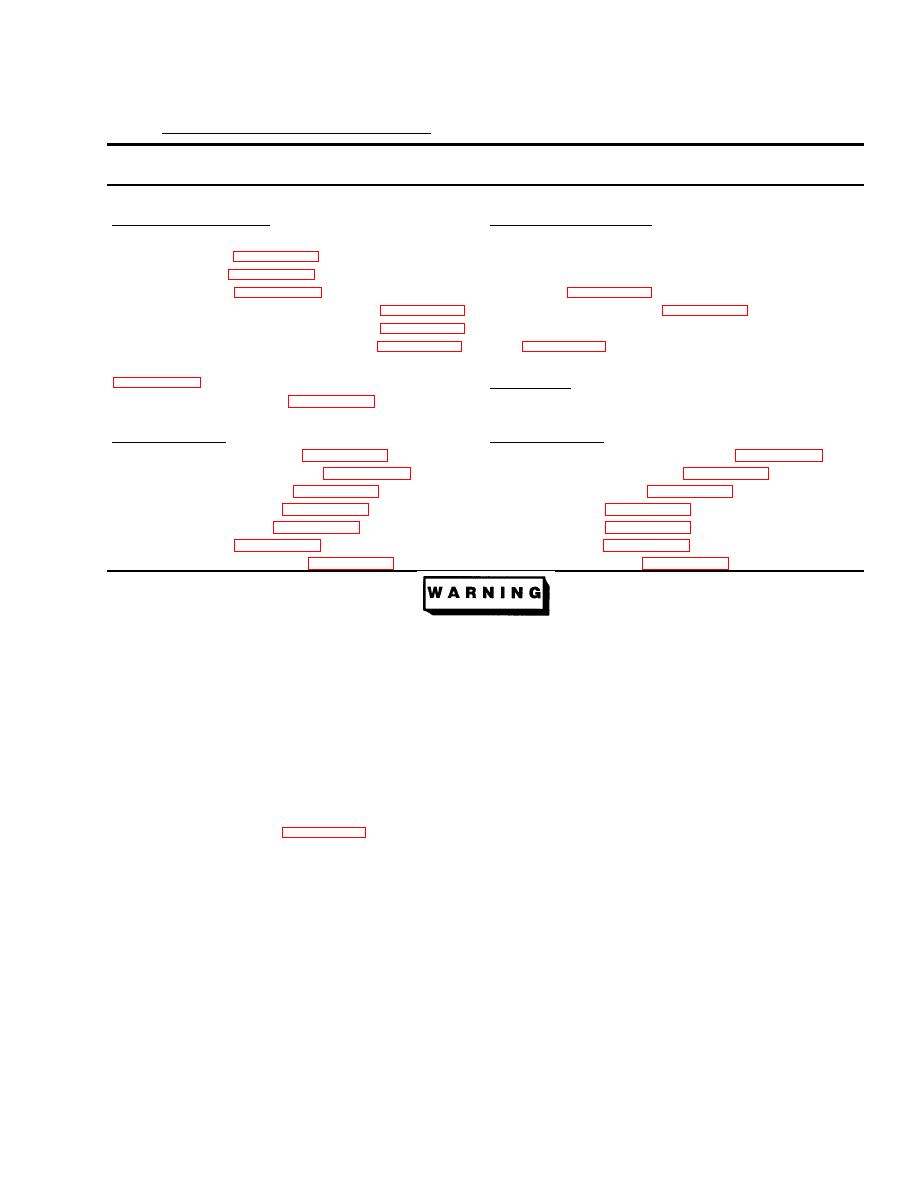
TM 10-5410-228-24
This task covers:
a. Removal
b. Installation
INITIAL SETUP
Tools/Test Equipment:
Equipment Conditions:
Shop Equipment, Automotive Maintenance and
Power shut off. Power panel and rear control panel
Repair (Item 38, Appendix B)
tagged.
Gloves (Item 16, Appendix B)
Hydraulic system drained if removing hydraulic
Goggles (Item 17, Appendix B)
motor (see para 2.14.3).
13/16 Inch Crowfoot Wrench (Item 54, Appendix B)
Thermistor removed (see para 2.14.6).
15/16 Inch Crowfoot Wrench (Item 55, Appendix B)
ECU covers and doors removed or open as required
1-3/8 Inch Crowfoot Wrench (Item 60, Appendix B)
(see para 2.14.1).
1-11/16 Inch Crowfoot Wrench (Item 62,
References:
TM 10-5411-224-14
Torque Wrench (Item 66, Appendix B)
Materials/Parts: (Cont.)
Materials/Parts:
Isopropyl Alcohol (Item 12, Appendix C)
Twenty-two Lockwashers (Item 18, Appendix E)
Antiseize Compound (Item 13, Appendix C)
Two Lockwashers (Item 20, Appendix E)
Hydraulic Fluid (Item 24, Appendix C)
Five O-rings (Item 63, Appendix E)
Rubber Gloves (Item 25, Appendix C)
O-ring (Item 58, Appendix E)
Rags, Wiping (Item 39, Appendix C)
O-ring (Item 67, Appendix E)
Sealant (Item 44, Appendix C)
Sealer (Item 50, Appendix C)
Hydraulic Sealant (Item 48, Appendix C)
Machine Key (Item 6, Appendix E)
The hydraulic system is pressurized. To prevent injury to personnel, gloves and eye
protection must be worn when working on hydraulic system.
NOTE
A small amount of hydraulic fluid will be released when removing tubes. Collect fluid in cup
or small container and clean any spillage with rags.
Cover or plug all tube openings immediately after disconnecting to prevent contamination.
Remove/disassemble only to the extent necessary to remove or replace defective
assemblies/components. Use standard maintenance shop practices/procedures.
Hydraulic Motor.
a. Removal (Refer to Figure 3-8)
(1)
Disconnect tube assembly (1) from elbow (2) on hydraulic motor (3). Remove and discard O-ring
(4) from elbow (2).
(2)
Disconnect tube assembly (5) from elbow (6) on hydraulic motor (3). Remove and discard O-ring
(7) from elbow (6).
(3)
Disconnect tube assembly (8) from tee (9).
(4)
Disconnect tube assembly (10) from reducing connector (11) on tee (9). Remove and discard O-
ring (12) from reducing connector (11).



